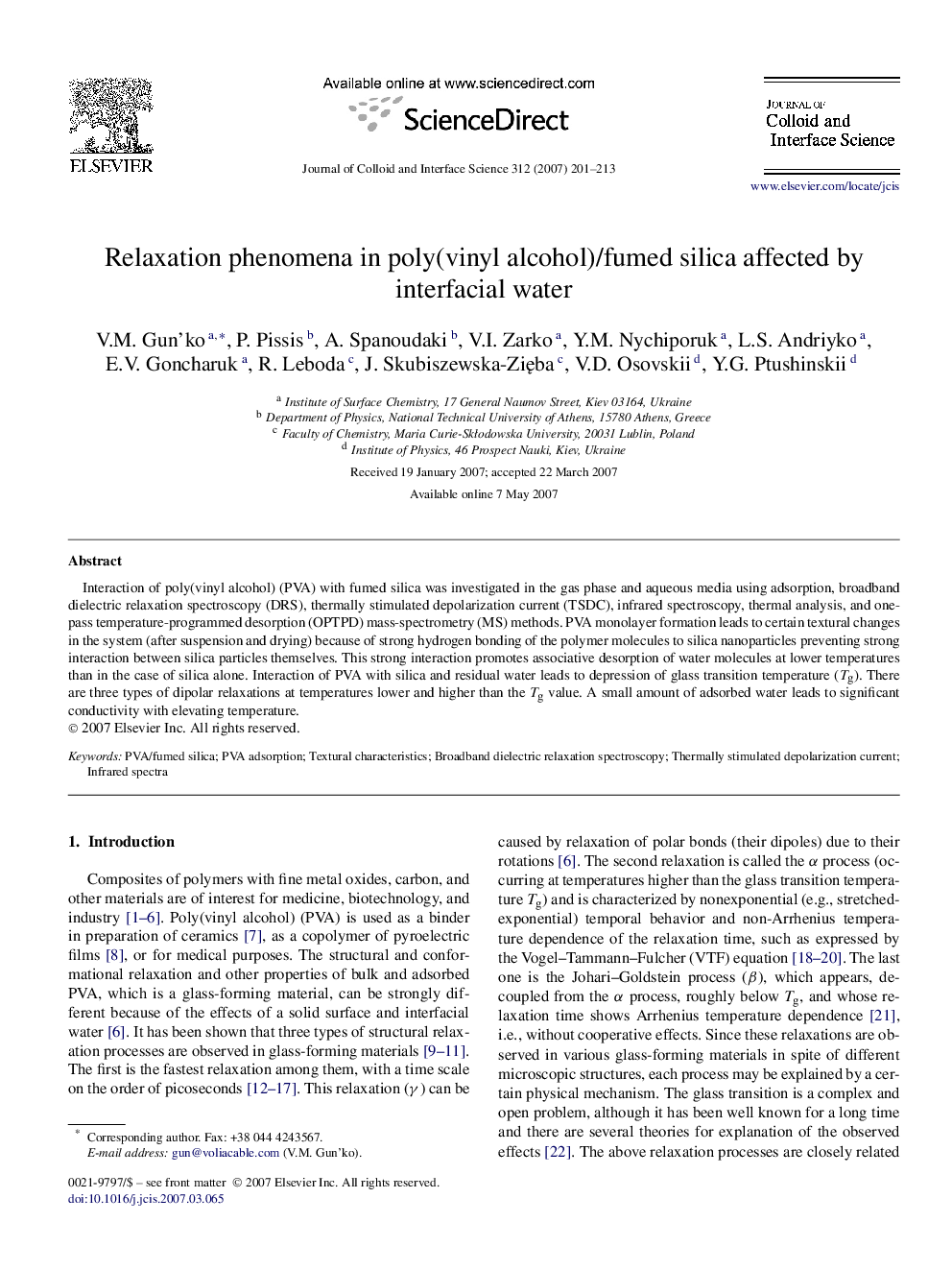| کد مقاله | کد نشریه | سال انتشار | مقاله انگلیسی | نسخه تمام متن |
|---|---|---|---|---|
| 612467 | 880699 | 2007 | 13 صفحه PDF | دانلود رایگان |

Interaction of poly(vinyl alcohol) (PVA) with fumed silica was investigated in the gas phase and aqueous media using adsorption, broadband dielectric relaxation spectroscopy (DRS), thermally stimulated depolarization current (TSDC), infrared spectroscopy, thermal analysis, and one-pass temperature-programmed desorption (OPTPD) mass-spectrometry (MS) methods. PVA monolayer formation leads to certain textural changes in the system (after suspension and drying) because of strong hydrogen bonding of the polymer molecules to silica nanoparticles preventing strong interaction between silica particles themselves. This strong interaction promotes associative desorption of water molecules at lower temperatures than in the case of silica alone. Interaction of PVA with silica and residual water leads to depression of glass transition temperature (TgTg). There are three types of dipolar relaxations at temperatures lower and higher than the TgTg value. A small amount of adsorbed water leads to significant conductivity with elevating temperature.
Formation of a PVA monolayer on a silica surface leads to textural changes caused by strong interaction of the polymer with nanoparticles, that which results in lower temperatures of water desorption and glass transition temperature depression.Figure optionsDownload as PowerPoint slide
Journal: Journal of Colloid and Interface Science - Volume 312, Issue 2, 15 August 2007, Pages 201–213